|
The Creekmouth story
Sir John Bennet Lawes, a pioneer in the artificial fertiliser
industry and founder of the Rothamsted Research Station, opened a
factory at Deptford in 1843. He later purchased land for his
new fertiliser and chemical factory at the remote area of
Creeksmouth (as it was then called), near Barking, in 1856-7;
goods travelled in and out by river. But this remote spot was
problematic for his workers as they had to travel a long distance
across the marshes to reach it, and he rectified this obstacle by
building cottages for his men and their families, creating the
village of Creekmouth. At this stage, there was no road to
the village; River Road was built about the time of the first world
war. Also around this time, the Barking School Board
built a new school in the village, replacing the school located in
converted cottages.
In July 1918, journeys to Creekmouth village were added
to bus route 23 (Marylebone to Barking) at Monday to Saturday
peak hours, running from Upton Park Boleyn and
terminating at the Crooked Billet. In December 1924, under
the ‘Bassom scheme’, these journeys were renumbered as the 163
group.
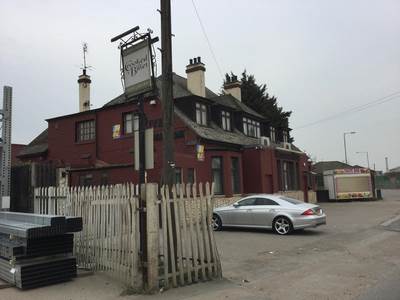
The original Crooked Billet was replaced by the
present building in 1925. Although the pub sign remains, the
business is now the 'River Restaurant', a club.
Photo © Peter Osborn
In 1925, the County of London Electric Supply Company
opened 'Barking A' Power Station in Creekmouth, and in 1927 it took
over from the small Barking Town Urban District Council power
station dating from 1897. In February 1927, the 163 was
extended to the Power Station Gates, and from February 1927
journeys were introduced on Sundays.
At the end of the Bassom scheme in October 1934, the 163 group
journeys were all renumbered 23C, the route which served Creekmouth
for nearly 40 years. However, during the war, the northern terminus
changed from Upton Park to Becontree Chittys Lane. In
September 1968, Creekmouth Sunday journeys were diverted in
Becontree via Becontree Avenue in place of Bennetts Castle Lane and
renumbered 23A; this route was in turn replaced at
Creekmouth by journeys on route 62 from July 1969.
Beyond the village and the power station, near what had been
known as Sandy Beach, a wartime anti-aircraft facility had left
behind about 15 accommodation huts. Joyce Webster, who was
born in Creekmouth Village in 1930, was one of the new tenants. Now
aged 88, Joyce attended the Barking RT
event on 30 March 2019 in order to relive the ride to
Creekmouth on route 23C.
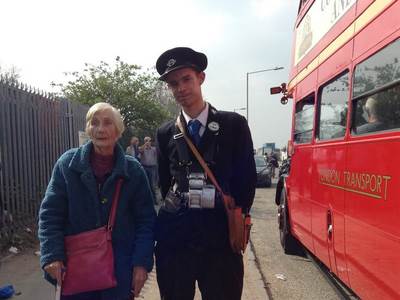
Having arrived at Creekmouth aboard her 23C,
Joyce looks a little dismayed at the state of the place.
Photo © Yvonne Thomas
Following severe flooding in 1953, Creekmouth village was
abandoned and demolished; all that remains is the former school
(now headquarters of a waste management company) and the former
Crooked Billet (now the ‘River Restaurant’). The power
station continued operation until 1981, being replaced by a new
power station further east which has itself now closed.
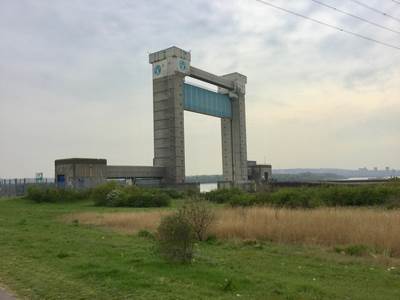
The better known Thames Barrier is upstream, so
Barking Creek, the outlet of the River Roding, needs its own.
The Barking Flood Barrier is situated next to the nature
reserve which replaced part of the village site.
Photo © Peter Osborn
Following 40 years of operation, and at times a very intensive
peak service, the 23C last ran in March 1973. It was replaced by an
extension of the 156 from Becontree on conversion to one person
operation. In September 1982, following closure of the power
station, both the 156 and Sunday journeys on the 62 were withdrawn
and replaced in Monday to Friday peak hours only by journeys on the
87. These were replaced in September 1991 by new route B4,
itself replaced in March 1993 by journeys on new route 387 running
from Little Heath. The last bus service to Creekmouth was on
25 October 2013, after which the 387 terminated at Barking
Riverside.
References: Creekmouth Preservation Society
|
Buses of Creekmouth
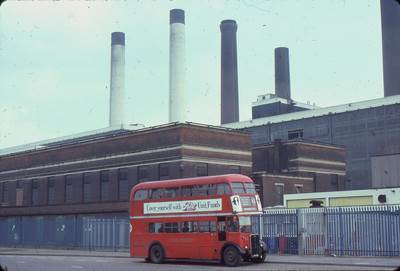
Creekmouth Power Station in 1979, shortly
before both the end of RT operation and the closure of the power
station. RT2671 lays over on route 62, having turned in the
turning circle opposite.
Photo © Fred Ivey
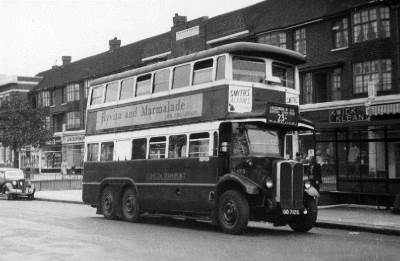
Six-wheeler LT473 working a 23C to Creekmouth
Power Station, seen at Faircross close to its home
garage, Barking. LTs operated the 23C, occasionally
after the war with utility Guy Arabs, until replaced by the RT
family in 1950.
Photo © Alan Cross
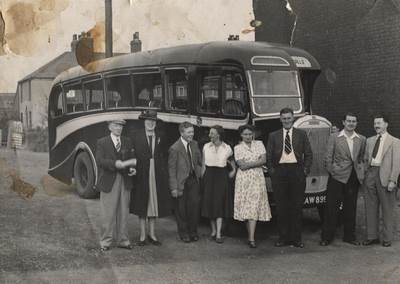
1948 Dennis Lancet EAW899 was bodied by Whitson
for JT Whittle in Shropshire, but the coach soon moved to Josephine
Coaches in Barking and then to Pascalls of Goodmayes, the operator
in this picture. The picture shows an outing to the seaside
from Creekmouth, with some of Lawes' cottages in the
background.
Photo © Creekmouth Preservation Society
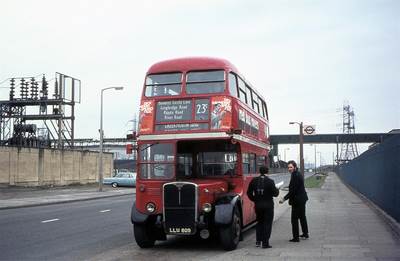
RT1901 has some limited custom from Creekmouth
on a gloomy weekday in the early 1970s. The 23C
timetable (including 62 on Sundays) is here.
Photo © David Flett
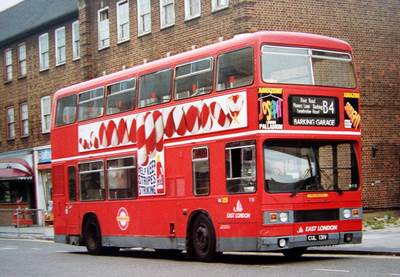
The short-lived B4. Barking's T131
returning from Creekmouth.
Photo © London Buses by
Adam (a very useful website)
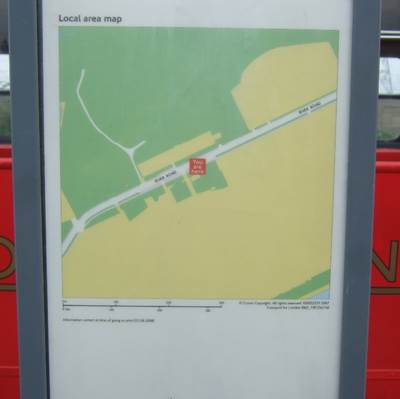
In 2009, when the 387 still served Creekmouth,
TfL usefully provided a local map on the bus stop. The route
62 commemoration that year was rather
more modest.
Photo © Peter Osborn
|